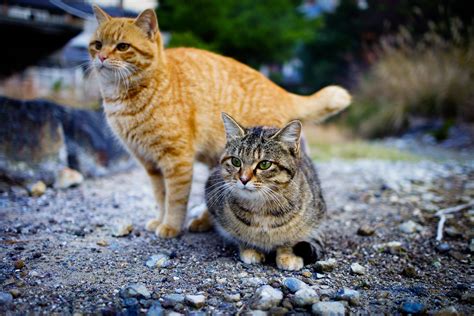Last week in Canberra I attended the Threatened Species Commission Community roundtable on the ‘feral cats’ strategy – the plan to eradicate 2 million feral cats by 2020, announced by Environment Minister Greg Hunt in July last year. Otherwise known as the ‘war on cats’, the plan is devised to tackle cats as the ‘single biggest threat’ to Australia’s smaller mammals (bilbies, pottoroos, bandicoots etc), all of which evolved uniquely here in Australia without the presence of cats, until colonization brought them here.
The meeting was well attended, with representatives from Animal liberation, shooters and hunters associations, dingo associations and various animal advocates including those supporting the strategy. Commissioner Gregory Andrews began the roundtable with a warning that rude behavior would not be tolerated and may result in eviction from the meeting by security and/or Federal police. I found the audience to be polite and restrained, and put this down to a combination of factors including the charismatic diplomacy offered by Commissioner Andrews, the unease associated with sitting in Government offices facing a panel of experts (there was no ‘round’ table as such), and a sense of fait accompli that emanates from a year old bureaucratic pronouncement on so much death. The strategic plan to eradicate feral cats (or 2 million of the possible 5 million, by 2020) includes plans to shoot and bait cats with new products (a bait called ‘curiousity’) and a device described by Commissioner Andrews as a ‘combination of algorithm and paint ball’ that recognizes cats and then fires a poison on to their coats which they then digest by grooming. The cats, we were repeatedly told, ‘go to sleep’ and die. As well as this, exclusion fencing is being funded, islands targeted for wholescale eradication, and responsible pet ownership highlighted.
In Australia, official rates of extinctions for mammals are amongst the worst in the world, especially when considering population density. The Red List, set up in 1964 by the International Union for the Conservation of Nature and Natural Resources, puts Australia 4th (behind the USA, Mauritius and French Polynesia) in a list of 250 countries that have ‘lost’ animal species. Australia is also in the top 10 for endangered and threatened species with 1018 (including islands) listed on the IUCN in 2015. Australia, including its outer islands counts 46 extinct plants and animals, as compared with 266 in the USA. But the difference is that most of Australia’s mammal extinctions have occurred post-colonisation, with 28 of the 46 believed to have become extinct post 1788. By comparison, North America records only one extinction since ‘European settlement’. Much of this information is recounted in “Ongoing Unravelling of a continental fauna: Decline and extinction of Australian mammals since European settlement’ (PNAS April 14, 2015, Vol 112, no, 15), by Woinarski, Burbidge and Harrison, who also state that the causes of Australia’s high ‘mammal losses’ are ‘unresolved, baffling and contested’ (4534). The lead author of that paper, John Woinarski was on the panel with Commissioner Andrews and advises the Commission, so clearly this paper was instrumental in making the case against cats. It is significant then that cats come to the fore in the Commission, when the research suggests other factors are also at play, including: foxes, the loss of aboriginal fire-based land management and what they refer to as the ‘rapid continent scale replacement of a purposeful and long-established indigenous land management regime by a substantially more exploitative and transformative set of land management practices’. Another word for this is settler colonialism. It brings the cats, foxes, sheep, cattle and pastoralism that rapidly alters habitats, landscapes through the annexation of Aboriginal land and the removal of Aboriginal people from their land. The authors note that pastoralism (mostly sheep and cattle) is now the dominant land use across much of Australia and that this has brought with it land clearing, habitat destruction, the restriction of firestick farming, persecution of animals such as macropods and koalas, and the effects on waterways of this system (water extraction, pollution, river modification, drought) leaves extraordinary animals like the platypus in ‘significant decline’ (4536). While the commission calls for a war on cats, the research makes ‘war on settler pastoralism/colonialism’ another possibility.
Two months after the publication of this article, the Federal Government’s Threatened Species Commissioner Gregory Andrews and Environment minister Greg Hunt declared a war on feral cats, an announcement that made international headlines, for instance in the The Washington Post which ran the headline: “Australia actually declares ‘war’ on cats, plans to kill 2 million by 2020’. The Post’s headline suggests surprise that cats would be or ever could be party to a war, something to declare war on, beings whose activities made them viable opponents. But as Dinesh Wadiwel argues in his book – the War on Animals (Brill 2015)– ‘war’ is actually the generalizable condition that characterizes all our relationships with animals. The distinction to be made here is that various wars on ferals are openly discussed and promoted – I’m thinking of Mao Zedong’s Sparrow wars in 1958, Britain’s ‘badger wars’, New Zealand’s ‘war on possums’, and back in Australia wars are often declared against animals such as wild dogs, cane toads, feral camels, pigs, horses, foxes and of course cats – and these make our other relations with animals (such as livestock and pets) appear peace-able.
Killing in the name of protection – or eradicating in the name of extinctions is not seen as paradoxical but has long been a mainstay of conservation biology, albeit increasingly subject to critique from outside and from within, such as in the compassionate conservation movement (Bekoff). Killing animals in the name of animals being killed is also something which, despite opposition from animal advocates, grips the popular imagination. Such wars are declared in order to either protect indigenous species from extinction, or to protect livestock or animal agriculture from competition over grazing. The former resonates with postcolonial forms of what Adrian Franklin refers to as eco- Nationalism, the latter with less comforting narratives of ongoing occupation. In these declarations of war, the two words, eradication and extinction – appear together to distinguish between two types of killing, a distinction that is difficult to uphold given that extinctions and eradications are BOTH intrinsic to settler colonialism’s ‘land management’. But the distinction between eradication and extinction is crucial to the political and ethical terrain on which conservation biology rests; and it is a terrain that is shared with settler colonialism – which has also long been invested in a distinction between eradication and extinction. That distinction can be characterized as follows: some things ‘are eradicated’ while some things ‘go’ extinct. One is active, one is passive; one invites recognition of the human parties involved, the other seems to evacuate humans from the scene entirely. One seems to generate excitement – the excitement of warfare, the hopes of the vanguisher perhaps, the other seems to deflate, quench, and in its papering over of human interests perhaps it even becomes boring, unable to generate human interest because it excludes them from its definition.
Eradication and extinction differ in the way that they include or exclude human agency from the animal deaths they refer to. Eradication programs are funded, endorsed, researched, actively promoted by politicians, conservation biologists, rural land owners – all of whom are visible as active human agents who go about seeking to eradicate animals from an area, an island, a zone, a country. Extinction, on the other hand, is frequently pronounced without a sense of human agency – as if the animals take themselves to extinction. The word extinction is taxonomic, describing a condition of species death, rather than the conditions under which death comes about. The distinction is important in a political and ethical sense because, as many Animal studies scholars has shown, but in particular I’m thinking of Carol J Adams and the ‘absent referent’ of the animal who is made into meat – how we represent animal deaths matters greatly when it comes to attaching ourselves to or distancing ourselves from the problem. The word extinction – the phrase – ‘they went extinct’ – does little to bring home how humans are connected to what can seem a mere ‘biological’ process that occurs without a cultural political context. Woinarski et al are rightly concerned by the ‘complacency’ of Australians towards the ‘extinction calamity’ that is before us. They hope that this may change when ‘the decline of high profile mammal species, such as the koala and platypus, becomes increasingly apparent’ (4533). But, if this is caused not just by cats, foxes, loss of indigenous fire stick farming but by a broader structure of settler colonialism (including animal agriculture or pastoralism), then it’s hard to see how Australians can become less complacent. Settler colonialism is a system that the authors are themselves writing from within, that we are all differently situated within, a system that will not make itself eradicable, indeed, which brings itself into being and sustains its domination or control of indigenous lands by locating the problem with the other pests, and not its pestiferous self. In the Australian context, settler colonialism produces a problem that it cannot itself solve without declaring war on itself. With decolonization not an option on the table (at least here), a ‘war’ is instead declared against cats, wild dogs, foxes and others. The other option is literally unthinkable within settler colonialism: that we are ourselves the pests. This is why eradication programs exist: to make it clear who the pest is. And because they are really only symptomatic of a underlying cause or context, which makes them necessarily half-hearted (despite the excitement of ‘doing’ something to ‘fight’ extinction), such eradication programs will likely fail; they will eradicate in the name of extinction, rehearsing a tension at the heart of conservation biology that is as familiar as the regret that accompanies the killing. Cats are going to bear the brunt of a problem that not only includes us, but also defines us. The problem is far more complicated than designing a better poison, as all that unease, all that regret, all that half-heartedness in the room that day suggested.



